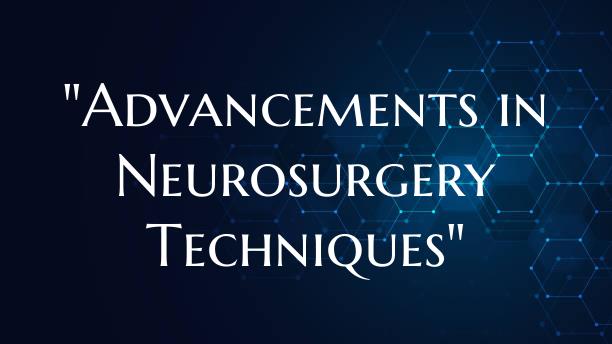
"Advancements in Neurosurgery Techniques"
In recent years, neurosurgery has witnessed remarkable advancements that have revolutionized the way complex brain and spinal conditions are treated. These groundbreaking techniques have significantly improved patient outcomes, reduced recovery times, and minimized the risks associated with invasive procedures. Let's delve into some of the innovative approaches that are shaping the field of neurosurgery today.
1. Minimally Invasive Surgery: One of the most significant developments in neurosurgery is the shift towards minimally invasive techniques. These procedures involve smaller incisions, specialized tools, and advanced imaging technology, allowing surgeons to access the brain with precision and minimal disruption to surrounding tissues. Minimally invasive approaches result in shorter hospital stays, quicker recovery periods, and reduced post-operative pain for patients.
2. Image-Guided Surgery: The integration of advanced imaging technologies such as MRI, CT scans, and intraoperative navigation systems has greatly improved the accuracy and safety of neurosurgical procedures. Surgeons can now precisely map the brain's intricate structures in real-time, allowing for more targeted interventions and the removal of tumors or abnormalities with greater precision while minimizing damage to healthy brain tissue.
3. Neuroendoscopy: Neuroendoscopy involves using a thin, flexible tube with a camera at its tip to visualize and access areas of the brain or spine through small openings. This technique has revolutionized the treatment of conditions such as hydrocephalus, brain tumors, and spinal cord cysts by providing surgeons with a minimally invasive way to perform complex surgeries with fewer risks and faster recovery times.
4. Laser Ablation: Laser interstitial thermal therapy (LITT) is a cutting-edge technique that uses laser energy to precisely target and destroy abnormal brain tissue while preserving surrounding healthy areas. This minimally invasive approach is particularly effective for treating brain tumors, epilepsy, and certain movement disorders, offering patients a safer and more efficient alternative to traditional surgery.
5. Neuromodulation: Neuromodulation techniques, such as deep brain stimulation (DBS) and spinal cord stimulation, have emerged as powerful tools in the management of chronic pain, movement disorders, and psychiatric conditions. By stimulating specific areas of the brain or spinal cord with electrical impulses, these therapies can alleviate symptoms and improve patients' quality of life, often when other treatments have failed.
Overall, the field of neurosurgery is continually evolving, driven by technological advancements and innovative approaches that are enhancing patient care and expanding treatment options. As researchers and surgeons continue to push the boundaries of what is possible, the future of neurosurgery holds promise for further improvements in outcomes, safety, and quality of life for patients facing complex neurological conditions.